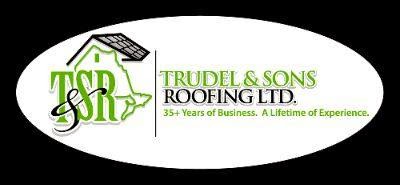Spring has arrived—with its unpredictable moisture patterns, gale-force winds and leftover snowstorms. For Ontario homeowners, that often means pesky roof leaks galore—in many common locations.
3 Common Roof Leak Locations – Prevention and Repair Tips
There are certain areas where roof leaks tend to develop more easily: around chimneys, skylights and in roof valleys. Let’s discuss each in more detail.
Leaking Chimneys.
Whether it’s due to aging caulk, cracked cement caps or flashing problems, chimneys are one of the biggest problem areas when it comes to leaks. Many (but not all) chimney leaks can be repaired by peeling off old, dried caulking and roof sealant from around the chimney’s base. Inspect each area of flashing for cracks or damage, and replace flashing as needed.
To improve the integrity of your flashing, remember to use a high-quality, flashing cement to re-caulk the area (rather than traditional roofing cements and sealants). If you have a more invasive leak caused by cracked mortar joints, stone or brick displacement, consider calling your local roofer who will perform a thorough roof inspection. The goal is to diagnose and repair the damage quickly.
Leaks Around Skylights.
Finding the source of a skylight leak can be tricky, however most skylight leaks occur in the flashing, which marks the point of contact between the skylight and the roof. Often, simply replacing the flashing will solve the leak problem. Another issue is improper installation, in which case skylight leak repair can be a real headache. Other, less common reasons behind skylight leaks are: improperly installed fasteners, poor flashing seals, glass micro-fractures or fissures, sealant failure due to thermal expansion. Some skylight leaks are simple and are easily handled by do-it-yourself homeowners, but if you’re experiencing severe interior effects, such as ceiling staining or flooring damage, call your roofing contractor immediately.
Leaks in Roof Valleys.
When two portions of your roof intersect, the resulting line is called a “valley.” Valleys typically contain a type of metal flashing, but in some cases, shingles or tiles may just butt up against one another. Either way, valleys are a common source for roof leaks. If your roof valleys contain metal flashing, it’s possible that the shingles were improperly cut, allowing water to leak behind faulty shingle tips and seep into your attic or down your walls. Valley leaks tend to be more complex to repair than other types of damage, so it’s best to have a contractor handle your roof valley repairs.
Some common roof leaks, if caught early enough, can be fixed by a capable do-it-yourselfer - however, if you ever have any doubts or hesitations, call Trudel and Sons Roofing at (905)642-3515!

No comments:
Post a Comment